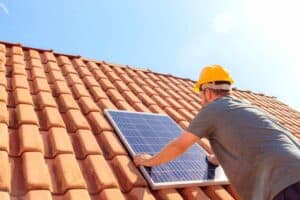As many households find they have more disposable income available, they can start protecting themselves against rising electricity tariffs.
Eskom is once again knocking on the National Energy Regulator of South Africa’s (Nersa) door with hefty demands amid revenue application season.
If the utility provider has its way, direct customers could be paying up to 66.08% more for electricity come April 2027.
“That’s two-thirds more expensive in three years,” says LookSee executive head, Marc du Plessis.
“However, easing pressure on household budgets can help families take steps to protect themselves from rising tariffs.”
Notably, Eskom customers are already paying 33.76% more for electricity compared to two years ago.
The power producer is now asking for above-inflation tariff increases for FY2025/26 to FY2027/28.
For those who get their electricity directly from Eskom, the increases proposed are the following:
- The 2025/26 financial year – 36.15%
- The 2026/27 financial year – 11.81%
- The 2027/28 financial year – 9.1%
Easing financial pressure
As the likelihood of steeper electricity bills hovers like a cloud, Du Plessis sees a silver lining.
“The financial pressure on household budgets is starting to ease.
“Lower inflation figures show that the cost of key household products is dropping, allowing households to breathe a sigh of relief,” Du Plessis explains.
After remaining stubbornly high for the past three years, consumer price inflation has finally come down below the 5% mark, hitting a low of 4.4% in August.
The Reserve Bank’s recent 25-basis point interest rate cut has also provided financial peace of mind for many South Africans, which will result in lower repayments on home loans, vehicle finance, personal loans, and credit and store cards.
“It’s been a tough few years for household finances, but now we’re entering a cycle where reduced inflation and interest rates will free up some disposable income,” says Du Plessis.
ALSO READ: How rooftop solar is changing South Africa’s energy landscape
Cheaper fuel prices have also eased the strain on the budget, with petrol prices having come down almost R5/litre and diesel prices almost R4/litre since May.
“Households will find they finally have more disposable income now than they did at the beginning of the year,” Du Plessis notes.
Solar: a worthwhile shopping spree
While going on a shopping spree might be tempting, investing in protecting your home against rising electricity tariffs could go further than a fancy gadget or expensive handbag.
Think about it, you have about six to nine months before the next tariff hike kicks in. So, why not use your extra money to gear up your home to use less power from the grid?
“Households can use that additional money in their budgets to install solar power, to cushion themselves against electricity price increases, which could put their households back under financial pressure next year,” says Du Plessis.
As a start, converting your electric geyser to solar could trim up to 40% off your electricity bill – that’s how much it costs the average family to heat its water. For most families, these monthly electricity savings are more than the finance repayments, meaning you can put a little cash back into your budget.
“The added benefit of solar power is that once the finance is paid off, all those savings go straight into your budget, giving your family a significant financial boost.”
ALSO READ: Is getting solar really worth it? Here’s how much you could save
Another option is to consider a home solar system which includes battery storage. This would allow you to use the sun to power your home’s daytime electricity needs and charge your batteries; and use the stored power in these batteries for the majority of your family’s night-time electricity needs.
“Ultimately all households should start looking at their electricity consumption and finding small ways that they can reduce their usage,” says Du Plessis.
“Even having a family meeting to discuss the high cost of electricity and how each person can play a role in saving power can help the household to free up more money for essentials.”
Standard Bank’s home efficiency platform LookSee has several solutions to help your family reduce your electricity consumption, make the move to solar and save money on your monthly electricity bills. These high-quality offerings are backed by qualified installers, flexible financing, and a dedicated customer care team to help you with your home efficiency journey.
It’s low-cost Solar Loan features personalised interest rates starting at prime plus 1% and capped at a maximum of prime +2.5% on loans up to R300 000, ensuring you can affordably get the right solar solution for your family’s needs.







